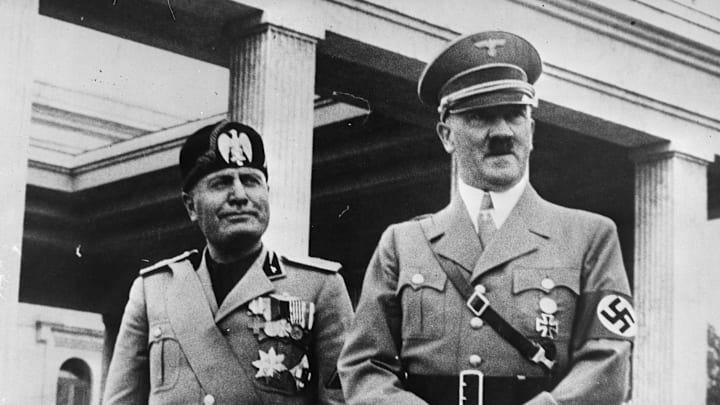
How is "fascism" defined?
The trouble with defining fascism comes from how it has developed. Although it began as a very specific term, relating to Benito Mussolini's party and supporters, it has been applied to so many other contexts since that it has become a bit blurry. Therefore, we'll look at a couple of different descriptions.
Thankfully, 20th-century dictators had a habit of writing their ideologies down, which means current generations can see the word in its original context. According to Mussolini in his work The Doctrine of Fascism, "the Fascist conception of life stresses the importance of the State and accepts the individual only in so far as his interests coincide with those of the State, which stands for the conscience and the universal, will of man as a historic entity."
In addition to the key belief that the state is the most important element of any nation, fascism was also historically seen as a response to what the fascist groups considered dangerous, radical philosophies: Marxism, egalitarianism, and pacifism. It generally succeeded when a leader could make the populace afraid enough of one or more of these leftist beliefs to give up personal liberties in order to keep them at bay.
In their attempts to define fascism beyond the WW2 era of European dictators, many scholars have attempted to explain the political system using a list of common characteristics. That way, any nation (past or present) that is suspected of being fascistic can be compared to what is essentially a checklist of beliefs, policies, and actions from the more obviously fascist regimes.
There are many of these lists out there, but the breakdown below is based on the work of Umberto Eco, Luis Britto García, Stanley G. Payne, Hannah Arendt, Emilio Gentile, Lawrence W. Britt, and Ian Kershaw.
One thing worth noting is that some of these traits might be hard to see in the present because they have been introduced gradually. As Milton Mayer explained: "nonresistance to the milder indulgences paves the way for nonresistance to the deadlier," a dangerously subtle game that often makes it impossible to identify fascism before it is entrenched.
